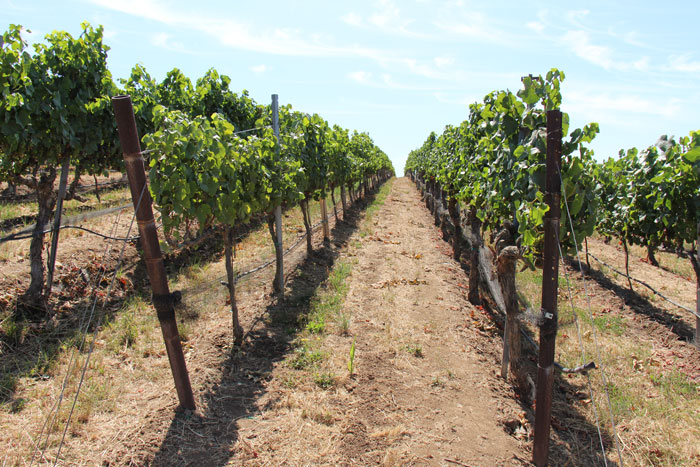
After an early, fast-paced start, development of Napa Valley’s wine grape crop had slowed to a more typical pattern in the last part of May, thanks to cooling weather earlier in the month, reports Domenick Bianco. As viticulturist with Hall Wines, based in St. Helena, Calif., he tends vineyards throughout the Napa Valley.
“In mid-April, vine development was maybe one to two weeks ahead of last year, which was anywhere from two to three weeks ahead of normal,” Bianco says. “By mid-May it was tracking close to normal, if not a week behind.”
This year’s bloom has stretched out much longer than last year’s fairly quick one, he notes. By the third week of May, bloom in his vineyards ranged from just getting started to completed. His earliest varieties, Chardonnay and Pinot Noir in the Carneros AVA began flowering around April 20th. A month later, farther north, just 1 percent to 2 percent of the Hardester Ranch vines in Pope Valley had begun blooming.
“Everything looks promising now,” Bianco says. “By and large, we’re seeing a fairly good set and cluster counts are about normal, if not a little light. It’s starting out to be another good vintage.”
This year’s elongated bloom and cool weather has produced a wide range in cluster development. “We’ll have to be making some tough decisions during our color (veraison) thinning pass as to which cluster to keep and which ones to drop,” he says. “We want the keep the clusters that are developing at the same rate so that the grapes mature uniformly for the best quality harvest.”
The lack or limited availability of water for irrigation is not as much an issue for the Napa Valley this season as it is for growers in other areas of the state, Bianco reports.
With his wells in good shape, he expects to have adequate water for his crops through this season. Rainfall in early December replenished soil profiles in his fields. This has limited the need for irrigation in his vineyards on the valley floor, although he started irrigation in hillside vineyards early. Also, with relatively little water needed for frost protection this spring, his reservoirs are about 90 percent full.
All vineyards are drip irrigated. Bianco uses various techniques for managing the water. They include walking the vineyards frequently, checking the canopies for any signs of water stress and using ET modeling to determine vine water use. In addition, he checks leaf moisture using pressure bombs and monitors soil moisture levels using neutron probes.
So far Bianco hasn’t seen any signs of powdery mildew in his vineyards, all of which are organically certified. If needed, he’ll treat any outbreaks with an organic fungicide.
The only insect pest concern so far has been an early-season flare-up of leafhoppers. “With timely application of our organic insecticide (PyGanic), we kept it under control,” he says.
About the Author(s)
You May Also Like




